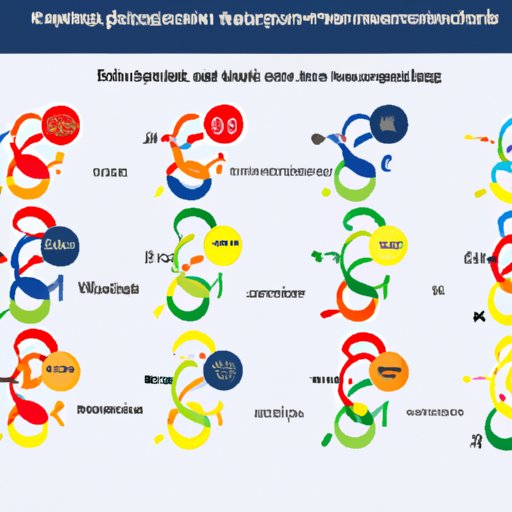Introduction
Enzymes are proteins that act as biological catalysts, meaning they facilitate and increase the speed of chemical reactions without being consumed in the process. All organisms rely on enzymes to perform essential life processes such as digestion, metabolism, and storage of energy. Enzymes are also used in industrial processes, such as food production and pharmaceutical development.
In order for an enzyme to be effective, it must be able to bind to its substrate, which is the molecule it acts upon. The enzyme then changes the shape of the substrate in a process called catalysis, transforming it into a product molecule. After the reaction is complete, the enzyme releases the product molecule and can then bind to another substrate molecule.

Catalytic Cycle of an Enzyme
The catalytic cycle of an enzyme is composed of three steps: binding of the substrate, catalysis of the reaction, and release of the product. During the first step, the enzyme binds to the substrate molecule, forming an enzyme-substrate complex. The enzyme then changes the shape of the substrate molecule, during the catalysis step, so that it can form a product molecule. Finally, the product molecule is released from the enzyme and the cycle begins again.
This process is highly specific, meaning that enzymes only recognize certain molecules and will not react with other substances. For example, the enzyme amylase will only recognize and react with starch molecules, not proteins or fats.
Enzymes as Biological Catalysts
Enzymes are important biological catalysts because they allow organisms to break down complex molecules into simpler forms that can be used for energy. For example, the enzyme amylase breaks down starch molecules into smaller sugars that can be absorbed by the body. This process is essential for the digestion of food and the release of energy from carbohydrates.
Other examples of specific enzymatic reactions include lipases, which break down fats, and proteases, which break down proteins. In addition, enzymes are used in the synthesis of complex molecules such as DNA and RNA.
Role of Cofactors and Activators
Cofactors and activators are molecules that are required for the enzyme to function. Cofactors are small molecules that bind to the enzyme and help to stabilize the structure of the enzyme-substrate complex. Activators are larger molecules that bind to the enzyme and cause it to change shape, allowing it to bind to the substrate more effectively.
For example, the enzyme pepsin requires the cofactor hydrochloric acid in order to function properly. Without hydrochloric acid, the enzyme cannot bind to its substrate and therefore cannot catalyze the reaction. Similarly, the enzyme hexokinase requires an activator molecule, ATP, in order to bind to its substrate and catalyze the reaction.
Types of Inhibition
Enzymes can also be inhibited, meaning that their activity is reduced or stopped completely. There are two main types of inhibition: competitive inhibition and non-competitive inhibition. Competitive inhibition occurs when a molecule binds to the active site of the enzyme, preventing the substrate from binding. Non-competitive inhibition occurs when a molecule binds to a different part of the enzyme, causing it to change shape and preventing it from binding to the substrate.
In addition, enzymes can be affected by environmental factors such as pH, temperature, and concentration. Changes in these factors can affect the activity of the enzyme, either increasing or decreasing its activity.
Studying Enzyme Activity
In order to study the activity of enzymes, scientists use spectroscopy and kinetics. Spectroscopy is a technique that uses light to observe the structure of a molecule. By observing the structure of an enzyme, scientists can gain insights into how it functions. Kinetics is a technique that measures the rate at which a reaction occurs, allowing scientists to measure the activity of an enzyme over time.
By using these techniques, scientists can gain a better understanding of how enzymes work and how they can be used to develop new drugs and treatments for diseases.
Conclusion
Enzymes are proteins that act as biological catalysts, speeding up chemical reactions without being consumed in the process. The catalytic cycle of an enzyme involves binding the substrate, catalyzing the reaction, and releasing the product. Enzymes are essential for the digestion of food and the release of energy from carbohydrates, as well as the synthesis of complex molecules. Cofactors and activators are molecules that are required for the enzyme to function. Enzymes can be inhibited by competitive and non-competitive inhibitors, as well as environmental factors. Finally, scientists use spectroscopy and kinetics to study the activity of enzymes.
(Note: Is this article not meeting your expectations? Do you have knowledge or insights to share? Unlock new opportunities and expand your reach by joining our authors team. Click Registration to join us and share your expertise with our readers.)
